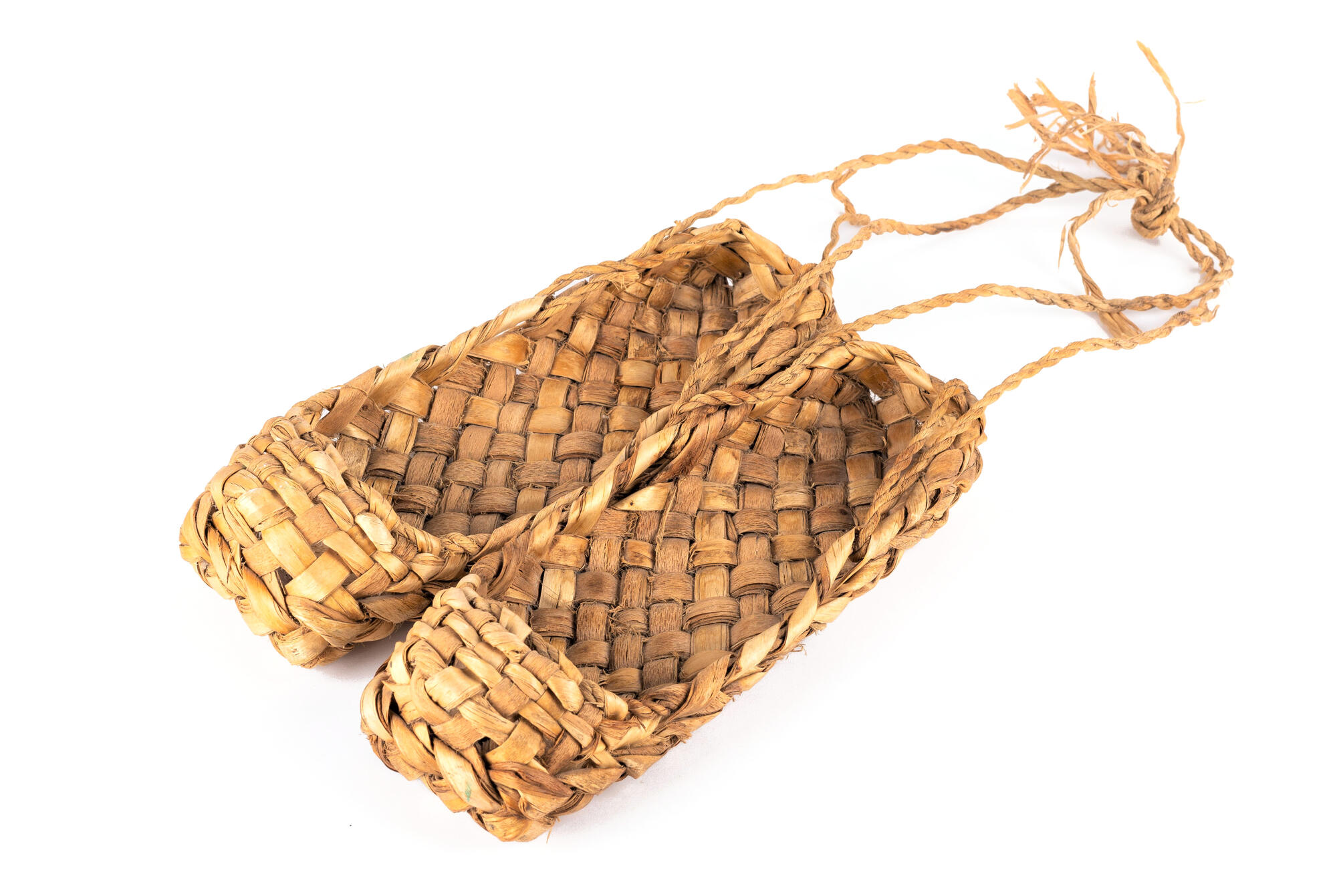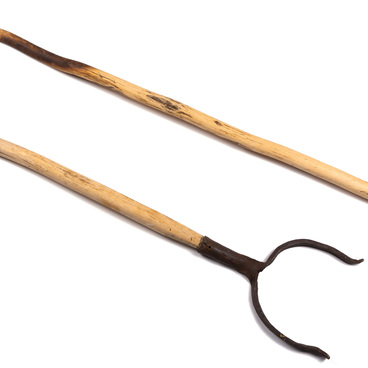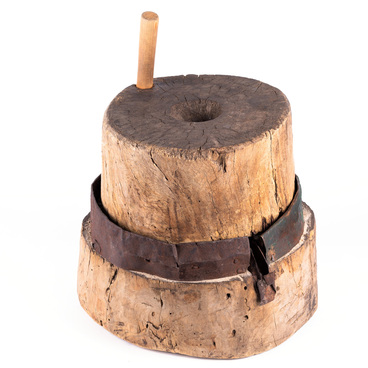Among the Russian peasantry, the most common footwear was bast sandals. One of the first written records that mentions bast shoes is found in the ‘Tale of Bygone Years’ (XII century), while bast shoes themselves are even older: special tools for weaving bast shoes — curved awls — had already appeared in the Stone Age, meaning 5–6 thousand years ago. The Ethnography Hall displays bast shoes made in the 20th century. They are woven from bast, the inner bark of deciduous trees.
Even when compared to modern footwear, bast shoes have some advantages: for example, they let air pass freely through them, and cannot chafe the foot. Decorated holiday bast shoes were also excellent examples of functional art. However, bast shoes have one very significant drawback: a short life span. In the summer, when bast shoes were worn actively, they became completely unusable in just 3–4 days.
Bast sandals were common in rural areas in Russia and Eastern Europe until the 1930s. Most often they were woven from bast, but sometimes birch bark, hemp, and other materials were used to make them, including horsehair and old ropes. Weaving bast shoes was a traditional winter occupation for peasants in between periods spent working in the field. In almost every Russian family, men knew how to weave bast shoes: boys learned this from childhood, and by adulthood they grasped this craft so well that they could weave several bast shoes in just a few hours.
The bast best suited for weaving shoes is the bast from the flat part of a linden trunk, without any defects along its entire length. The bast was harvested in the summer, when the inner part of the tree bark, the bast, was sufficiently strong and flexible. A chunk of wood is needed to weave bast shoes that approximately corresponds to the size of a man’s or woman’s foot. This chunk is called a block, and the bast was woven around it: this way the craftsman would not make an error with the size of the sandals. Bast shoes were made on one block, and that is why there were no differences between the left and right shoe. Also, when bast shoes were weaved, a knife was used to cut the bast and a flat, curved awl. That was used to lift one of the loops in the part that had already been woven and then push the free end of the bast under it.
When weaving bast shoes, several types of bast mesh were widely used. The mesh could vary, both due to the characteristics of a certain region’s handicraft and the purpose of the bast shoes: for example, a crustaceous bast mesh was used to weave bast shoes intended to be worn in rainy weather. Thin bast shoes with black, woolen braiding were meant to have a festive look. For autumn and springtime housework in the yard, simple, high bast shoes without any braiding were considered to be more comfortable. Bast shoes made from strips of cloth were called plaiting.
Even when compared to modern footwear, bast shoes have some advantages: for example, they let air pass freely through them, and cannot chafe the foot. Decorated holiday bast shoes were also excellent examples of functional art. However, bast shoes have one very significant drawback: a short life span. In the summer, when bast shoes were worn actively, they became completely unusable in just 3–4 days.
Bast sandals were common in rural areas in Russia and Eastern Europe until the 1930s. Most often they were woven from bast, but sometimes birch bark, hemp, and other materials were used to make them, including horsehair and old ropes. Weaving bast shoes was a traditional winter occupation for peasants in between periods spent working in the field. In almost every Russian family, men knew how to weave bast shoes: boys learned this from childhood, and by adulthood they grasped this craft so well that they could weave several bast shoes in just a few hours.
The bast best suited for weaving shoes is the bast from the flat part of a linden trunk, without any defects along its entire length. The bast was harvested in the summer, when the inner part of the tree bark, the bast, was sufficiently strong and flexible. A chunk of wood is needed to weave bast shoes that approximately corresponds to the size of a man’s or woman’s foot. This chunk is called a block, and the bast was woven around it: this way the craftsman would not make an error with the size of the sandals. Bast shoes were made on one block, and that is why there were no differences between the left and right shoe. Also, when bast shoes were weaved, a knife was used to cut the bast and a flat, curved awl. That was used to lift one of the loops in the part that had already been woven and then push the free end of the bast under it.
When weaving bast shoes, several types of bast mesh were widely used. The mesh could vary, both due to the characteristics of a certain region’s handicraft and the purpose of the bast shoes: for example, a crustaceous bast mesh was used to weave bast shoes intended to be worn in rainy weather. Thin bast shoes with black, woolen braiding were meant to have a festive look. For autumn and springtime housework in the yard, simple, high bast shoes without any braiding were considered to be more comfortable. Bast shoes made from strips of cloth were called plaiting.



